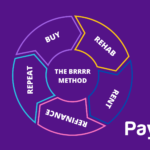Wear and tear is an idea that all landlords should know. It’s when normal use by a tenant causes a property to slowly get worse. Knowing this is key for landlords to handle their properties and decide who fixes what.
When people live in a place, things like floors, carpets, paint and appliances can wear out because of ordinary use. Landlords need to be aware of this and plan on repairs and maintenance.
Understanding it helps landlords tell the difference between usual wear-and-tear and damage from carelessness or abuse. This way they can set fair rules for tenants and protect their investments.
Let’s take an example: a landlord rented out a furnished apartment. After the tenant moved out, there were marks on the walls from furniture. The landlord didn’t expect this since there were no rules about how to hang items or move furniture.
In this case, understanding deterioration would have helped the landlord inform the tenant about wall preservation. By saying excessive markings were damage, not wear and tear, it would have avoided problems and losses.
All in all, knowing wear and tear is very important for landlords to manage their property. It allows them to set standards for tenants while communicating openly in the lease agreement. This way, landlords can stay successful in property management.
Definition of wear and tear
Wear and tear is an unavoidable deterioration of a property caused by regular use. Scuffs, worn carpets, chipped paint, and broken fixtures are all examples of wear and tear.
Landlords are responsible for maintaining good condition of their property. But, don’t confuse wear and tear with tenant-caused damages! While normal wear and tear is expected, damages beyond normal usage are not.
It’s important for landlords to inspect their properties regularly . This way, they can address maintenance issues before they become bigger problems. Landlords should also consider wear and tear when budgeting for repairs and renovations.
To avoid disputes about damages, it’s a good idea to document the condition of the property before and after tenants move in/out. This will help determine if any damages go beyond normal wear and tear.
Understanding what constitutes degradation is essential for landlords. It helps them distinguish between ordinary depreciation and tenant-inflicted damages, while preserving the longevity of their investments. So, watch out for routine deterioration and be proactive in maintaining your property!
Understanding the concept of wear and tear
Wear and tear is essential for landlords to comprehend, as it affects the state of their properties. It is the natural decay that happens over time when tenants inhabit a leased space.
When tenants live in a property, they cause some degree of wear and tear. This can range from minimal scuffs on walls to more serious harm, such as stained carpets or broken appliances. It’s important to recognize that wear and tear is different from intentional damage or neglect.
Landlords must think about factors like tenancy length, number of occupants, and property condition before the tenant moved in to decide what counts as normal wear and tear. A well-maintained property will get less wear and tear compared to one that has been neglected.
To reduce excessive wear and tear, landlords can take multiple proactive measures.
- Carrying out detailed inspections before tenants move in allows documentation of any existing damages. This sets expectations for both parties and enables landlords to differentiate between new damages caused by tenants and pre-existing ones.
- Regular maintenance is also necessary to stop minor problems from becoming major ones. Addressing repairs promptly can limit further deterioration and reduce possible disputes with tenants regarding responsibility for damages.
- Creating clear guidelines about tenant responsibilities for maintenance during their tenancy is another suggestion. This can include providing instructions on how to care for specific features of the property, such as hardwood floors or countertops. Educating tenants about proper maintenance practices can help prevent unnecessary wear and tear.
By employing these suggestions, landlords can efficiently manage the deterioration in their rental properties. Knowing this concept allows them to keep their investments while also guaranteeing a positive rental experience for their tenants.
Landlords should remember that wear and tear is like that pesky neighbor who always pops in uninvited, but can be managed with suitable maintenance.
Responsibilities of landlords regarding wear and tear
Here are the key points to keep in mind:
- Normal wear and tear is expected in a rental property – faded paint, worn carpet, etc.
- Landlords must maintain the property in good condition – repair broken appliances, plumbing, etc.
- Regular inspections must be done to prevent issues.
- Document the condition of the property before and after tenant move in/out – photos, videos, written reports.
- If the tenant causes damage beyond normal wear and tear, the landlord can withhold the security deposit for repair costs (following applicable laws).
- Communication is key – clearly communicate expectations regarding property upkeep and maintenance.
Stay informed about local laws and regulations. Staying proactive, communicative, and educated on rights and obligations will create a positive rental environment. Be a responsible and successful landlord! Just remember, the only way to prevent deteroriation is to never let anyone touch anything – good luck with that!
Preventive measures to minimize wear and tear
To reduce wear and tear in rental properties, preventive measures should be taken. Here are some effective strategies:
- Maintain regularly: Inspect and repair often to catch any problems before they become major.
- Be clear: Let tenants know the expected upkeep of the property, such as cleaning and reporting damages.
- Durable materials: Pick materials that can handle regular wear and tear, reducing replacements.
- Furnishings: Select furniture and fixtures that are tough and easy to maintain, reducing risk of damage.
Teach tenants good habits. Educate them about proper care for the property they rent.
Pro Tip: Inspect the property regularly and handle repairs quickly. This will help identify potential issues and prevent them from getting costly. It’s like trying to stop a Christmas tree from dropping its needles – a tricky task that might just leave you feeling prickly!
Strategies for dealing with wear and tear
Dealing with it can be difficult for landlords. But, there are strategies to limit its impact. Five key strategies to consider are:
- Regular Inspections – Identify signs early on to address issues quickly.
- Tenant Communication – Keep open lines of communication with tenants to report issues promptly.
- Routine Maintenance – Implement a regular maintenance schedule to prevent small issues from escalating.
- Quality Materials – Use quality materials that are durable and long-lasting to reduce the frequency of repairs.
- Deposit Deductions – Outline terms regarding deposit deductions in the lease agreement for excessive wear and tear.
In addition, landlords may need to hire professionals for specialized expertise. Also, keep detailed records of all inspections, repairs, and tenant communication to protect your interests if disputes arise.
Legal considerations related to wear and tear
Property Condition Report: Document the condition of a property at the start and end of tenancy to protect landlords and tenants. List existing damages, if any, to avoid disputes.
Fair Wear and Tear: Know the difference between fair wear and tear and tenant damage. Tenants are responsible for damages due to misuse or negligence, but not for normal wear and tear.
Depreciation Calculation: Accurately assess depreciation to determine costs for repairing or replacing damaged items. Calculate depreciation to claim the correct amount from security deposits.
Regular Maintenance: Ensure regular maintenance of the property for a longer lifespan and to reduce potential tenant damage. Set clear expectations for the responsibility of maintenance to prevent disputes.
Security Deposits: Deduct repair costs from security deposits fairly and in accordance with laws. Provide proof such as invoices or receipts to strengthen the landlord’s position.
Stay Informed: Understand state or city laws regarding wear and tear. Stay updated with legislation to be compliant and protect investment. Don’t let ignorance take over!
Conclusion: Landlords, wear and tear is just ‘tenant-induced chaos’. Embrace it, expect it, and get some extra insurance.
Conclusion
Wear and tear is an unavoidable part of having rental properties. It’s the gradual deterioration that happens over time due to normal usage. Landlords must understand the difference between this and tenant negligence. Tenants have to keep the property in good condition during the lease period. But, landlords should expect some wear and tear. Age of appliances, length of occupancy and the quality of materials all play a role in how much wear and tear will occur.
Regular inspections, both before and after tenancy, and keeping records including photographs, can help avoid disputes. There are legal guidelines in each jurisdiction about what constitutes deterioration. Landlords should make themselves aware of these to protect their rights and make decisions about security deposits.
90% of security deposit disputes are related to damage beyond normal wear and tear.
Frequently Asked Questions
FAQ 1: What is wear and tear?
It is the gradual damage that occurs to a property as a result of normal everyday use by tenants. It includes minor damages, deterioration, and natural aging of the property.
FAQ 2: What is considered normal deterioration?
It is the expected deterioration that happens over time, and landlords cannot hold tenants responsible for the cost of repairing or replacing items due to normal wear and tear.
FAQ 3: How can landlords differentiate between degradation and tenant damage?
Landlords should consider the overall condition of the property, the age of the item in question, and the length of the tenancy. Minor scuffs and marks are usually considered wear and tear, while significant damage caused by negligence or misuse is considered tenant damage.
FAQ 4: Can landlords deduct the cost of wear and tear from the security deposit?
No, landlords cannot deduct the cost from the security deposit. Security deposits are intended to cover actual damages caused by tenants that go beyond normal use. However, landlords can use the security deposit to repair or replace items that were damaged by tenants during their tenancy.
FAQ 5: Should landlords document the pre-existing wear and tear before a new tenant moves in?
Yes, it is highly recommended for landlords to document the pre-existing degradation before a new tenant moves in. Conducting a thorough move-in inspection and creating a detailed checklist or taking photographs will help in accurately determining any additional damages caused by the new tenant during their stay.
FAQ 6: What can landlords do to prevent excessive wear and tear?
Landlords can take several measures, such as regularly conducting property inspections, providing clear guidelines on maintenance and care, promptly addressing repair requests, and using durable and easy-to-maintain materials in the property.
Dave is a seasoned real estate investor with over 12 years of experience in the industry. Specializing in single-family residential real estate, David’s strategic approach combines market analysis, financial acumen, and a deep understanding of urban development trends to maximize investment returns.










